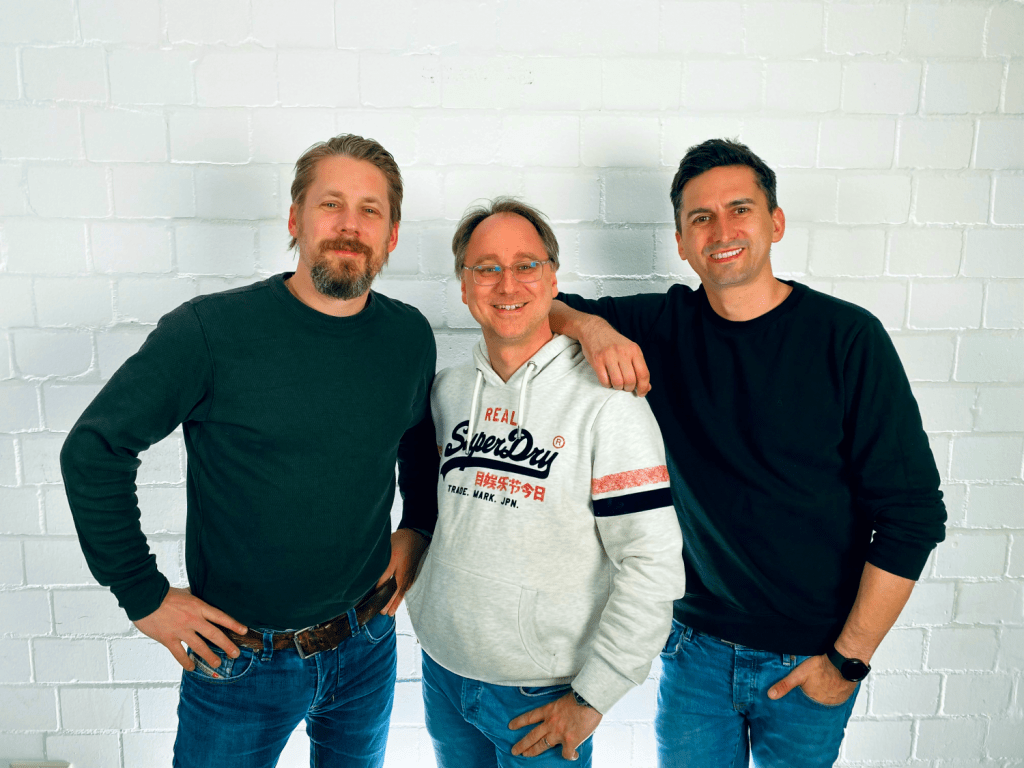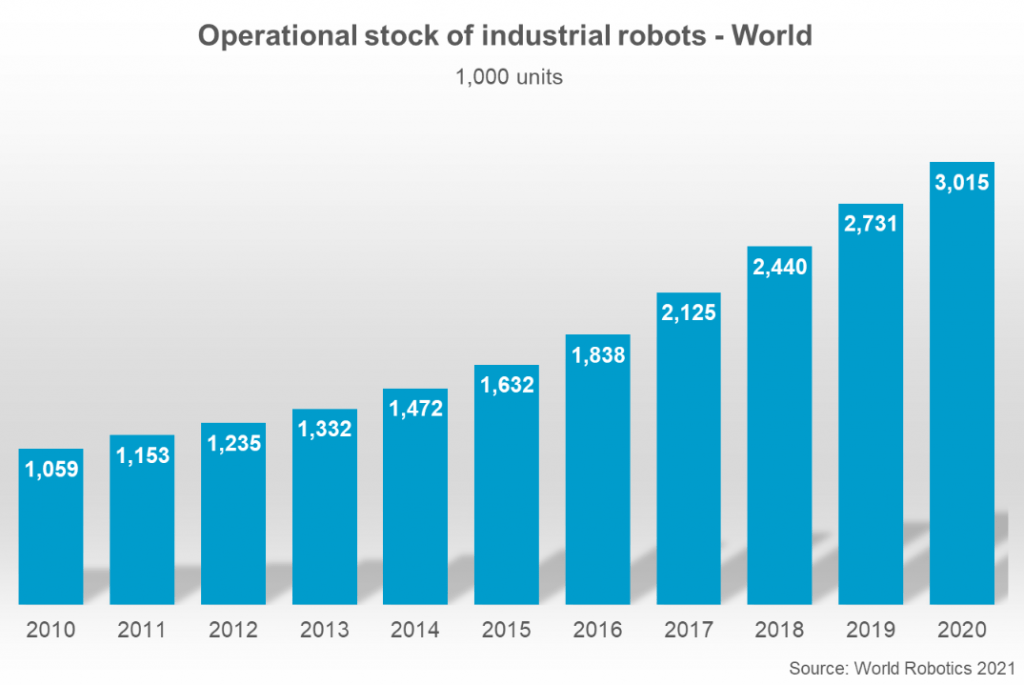ahead robotics instead of yuanda robotics - interview with Jens Kotlarski
Dr. Jens Kotlarski is well known in the industry and actually needs no introduction. Nevertheless, this is given here. He founded FORWARDttc GmbH with partners back in 2012 - a company for knowledge and technology transfer from research to industry. The company was acquired by avateramedical GmbH in 2020. In 2017, Dr. Kotlarski founded Yuanda Robotics GmbH, based in Hanover. The largest shareholder was the Chinese Shenyang Yuanda Aluminium Industry Group, or Yuanda Group for short, with a 70% stake. According to Dr. Kotlarski, the cooperation with the Yuanda Group was always trusting and good, and agreements were kept. In this respect, Yuanda Robotics GmbH was not only one of the first cobot developers, but the first German-Chinese robotics company ever. Subsequently, "Yu", an AI-based cobot with numerous interesting features (including integrated camera and image processing), was developed. Its user interface was also always highlighted.
This week I had the opportunity to have a phone conversation with Dr. Jens Kotlarski, now managing partner of voraus robotik GmbH, which ultimately emerged from Yuanda Robotics GmbH, which filed for bankruptcy in January 2022.
Background of the insolvency of Yuanda Robotics
In 2021, the "Yu" was largely ready for the market. However, the Yuanda Group in its role as main shareholder and financial investor, which had invested a double-digit million amount, ran into financial difficulties - also due to Corona. However, a planned takeover of Yuanda Robotics GmbH by a third party and, in this context, a further investment surprisingly failed at the last minute. Insolvency was therefore filed at the beginning of 2022. In view of the insolvency, I was all the more surprised at automatica to see how joyfully and amicably Dr. Kotlarski was greeted by a former employee. Together they had driven the project from the idea to the product stage. But 100 meters from the finish line...
voraus robotik GmbH as successor of Yuanda Robotics GmbH
voraus robotik GmbH was founded as a successor entity to Yuanda Robotics GmbH in the insolvency of Dr. Jens Kotlarski, Prof. Ortmaier (who was already a founding member of Yuanda) and Bonanza Industrie GmbH. The latter is held by Philipp Georgi, who has known Dr. Kotlarski for years and will be or is operationally active within voraus robotics. All founding members have contributed their own capital. Thus voraus robotik GmbH is sufficiently financed for the time being, despite the high number of employees with more than 30 persons. A round of financing could be due in early/mid-23.
The German company name is owed to the fact that Jens Kotlarski likes to publicize the company's origins and is proud of its origins and headquarters. The state government of Lower Saxony will be happy to take note of this, as it is investing heavily in the robotics cluster there.
voraus robotik GmbH has taken over all assets and IPs from the insolvency estate. Equally important was the takeover of all developers.

The business model
Unlike before, revenues are now to be generated exclusively with software. Coming from a mechatronics background and having driven a collaborative robot from the idea stage to market maturity, the company knows how a robot works, what a modern system can do and what special requirements are placed on the software and the supporting technologies.
Jens Kotlarski says that industrial robotics has been somewhat neglected in recent years, as the focus has been on cobots due to the predicted growth. This should be able to be compensated for with his software. Industrial robots are much more robust than cobots, but the software is more "medieval, like a Viking". The "muscular machines should now be given the intelligence, flexibility and usability of modern cobots.
The intention is to improve the existing operating systems on the basis of the software developed so far (see below). They can be upgraded or completely replaced. In order to test whether this is at all possible, six different robots were made to run completely with the existing software within six weeks in the spring. This means that, according to today's technological understanding, systems that are no longer up to date could be brought up to the current state of development and new functions, such as image processing, machine learning and cloud connectivity, could be implemented with a modern user interface. However, this was done using the company's own software instead of that of the manufacturer. The high flexibility and modularity of the Yus and its software was an advantage here. For example, the communication protocol does not matter. Another example is that the camera, or a camera in general, does not necessarily have to be mounted on the robot, but can also be located somewhere else or even function entirely without a robotic context. The modularity applies equally to the safety. It is dedicated with its own controller, so that the complete robotics monitoring can take place in compliance with the standards. Ultimately, this should give companies the opportunity to (largely) close the gap to such innovative companies as Neura Robotics in the shortest possible time, or to compensate for delivery problems. Because of its hardware diagnostics, the approach is also suitable for rapid component replacement, e.g. at the control level.
What is important for the robot manufacturers and generally for the customers is that they retain exclusive access to their specific domain/specialist knowledge. Through a specially developed API and development environment, "everyone can do their thing", realize their own applications by integrating domains/expertise, in order to keep the promise of turnkey solutions and application-specific solutions economically.
Jens Kotlarski shares my view that turnkey solutions are increasingly in demand. The customer wants a ready-made solution and not puzzle pieces. With the robotics software ahead, the solutions can be created more easily and completely flexibly and executed on the right systems or system connections.
Target customers
The software is currently offered to robot manufacturers, OEMs and large integrators. In this context, an Internet platform is also being developed so that end users can also use various apps directly. The existing system and its functions can thus be flexibly tailored to the respective application. Pricing is still being determined, but it seems conceivable that the smallest version will possibly be in the upper three-digit range. The more extensive versions and technology packages are likely to cost a small four-digit sum.
voraus robotik offers support for integration. Individual adaptation is offered. This is also done "to break the ice" and to finally match the software once again perfectly to the existing hardware. Usually only small things have to be changed. After 3-6 months, the complete upgrade of an operating system is possible and the system is ready for the market. In the medium term, a brand and a "seal of quality" similar to "Intel inside" should be built up.
I would like to thank Dr. Jens Kotarski for the interview, the content of which has been reproduced in an agreed manner.
Thoughtn of the author
According to my estimates, there should be around 4 million industrial robots worldwide by the end of 2022. I think the newer robots will be at the workplaces for which they were designed. Whether investments will still be made in very old models is an interesting question. In terms of sustainability, it would make sense.

It will be exciting to see whether manufacturers are still interested in upgrading their older models or only think in terms of new models. Regardless of this, the end-user market should be very interesting in the medium term. At the same time, the software can be a selling point for new robots that don't yet offer everything: "If it does become relevant, you can upgrade."
Perhaps voraus robotik's core market includes deliveries from (roughly) 2014-2019, but voraus robotik's shareholders, and Jens Kotlarski in particular, will of course be in a better position to assess this.
Are we networking? LinkedIn
-> To the Cobot group on LinkedIn (Link) .
In my own account/advertisement
The author of this blog is significantly involved in the AI/robotics project Opdra. He advises on almost all issues related to robotics incl funding/subsidies, but does not go in-depth into the technology. More about him can be found here.

